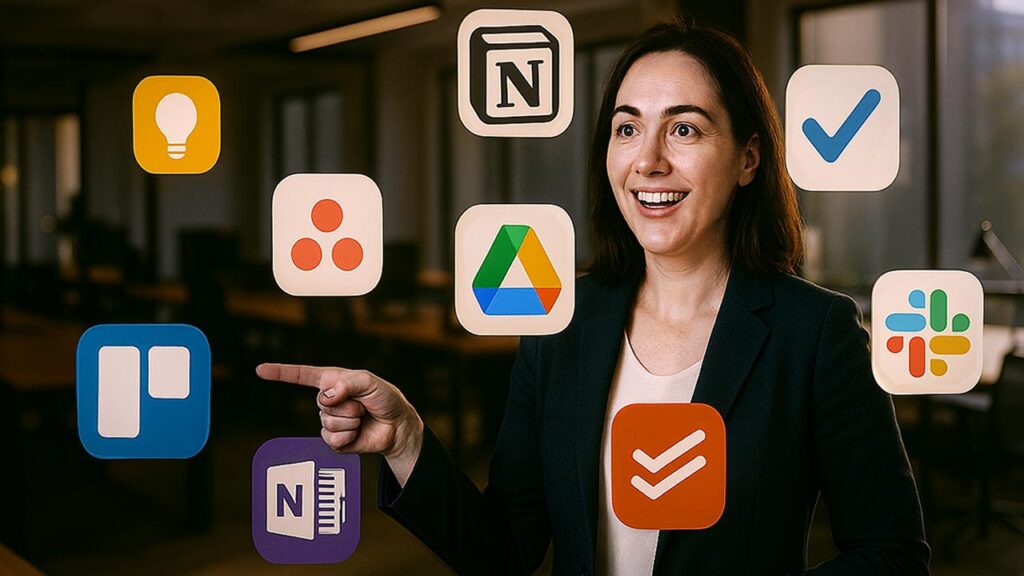🚀 Top 9 Benefits of Productivity Apps for Small Businesses
Productivity apps have become essential tools for small businesses looking to streamline operations, enhance team collaboration, and make the most of limited resources. Whether you’re managing projects, automating repetitive tasks, or improving communication across remote teams, the right productivity tools can dramatically boost efficiency and drive growth—all while keeping costs low and flexibility high. Here are 9 of the the top benefits.
1. Improved Time Management
- What it means: Productivity apps like Todoist, Trello, and Asana help small businesses organize tasks, assign deadlines, and set priorities.
- Result: Less time wasted on manual planning and more time focused on execution.
Example: A small marketing agency uses Trello to manage weekly sprints, cutting planning time by 50%.
2. Enhanced Collaboration & Communication
- What it means: Tools like Slack, Microsoft Teams, and Notion centralize communication, file sharing, and idea tracking.
- Result: Reduces reliance on email, speeds up decision-making, and ensures no ideas get lost in the shuffle.
Example: A remote accounting team uses Slack to handle client inquiries in real-time, increasing client satisfaction.
3. Centralized Project Management
- What it means: Productivity apps provide a single view of ongoing projects with timelines, responsibilities, and deliverables.
- Result: Increases accountability and visibility across teams.
Example: A freelance web developer uses ClickUp to manage multiple client projects in one dashboard—ensuring on-time delivery.
4. Automation of Repetitive Tasks
- What it means: Many productivity tools integrate with Zapier, Make.com, or native automations to handle recurring work (e.g., task creation, reminders, follow-ups).
- Result: Saves valuable time and reduces human error.
Example: A small e-commerce business uses automation to assign inventory checklists weekly without manual input.
5. Mobility and Remote Access
- What it means: Apps like Google Workspace, Dropbox, and Evernote sync across devices, giving employees access to work from anywhere.
- Result: Encourages remote work, flexibility, and responsiveness.
Example: A small law firm securely accesses client files while in court using Dropbox and Google Drive.
6. Cost-Effectiveness
- What it means: Most productivity apps offer free tiers or affordable plans tailored for small teams.
- Result: High ROI with low upfront investment.
Example: A startup founder uses the free tier of Notion for CRM, project management, and internal wikis—all in one.
7. Improved Focus and Workflow
- What it means: Time tracking apps like RescueTime or Toggl help monitor how time is spent.
- Result: Encourages better habits and productivity.
Example: A creative agency identified time sinks and reduced unproductive browser time by 35% using RescueTime.
8. Scalability and Integration
- What it means: Apps can grow with the business and integrate with accounting, marketing, HR, and CRM systems.
- Result: Supports long-term growth without having to switch platforms.
Example: A solopreneur starts with Trello and later integrates it with QuickBooks and Mailchimp for full-stack business management.
9. Data-Driven Decision Making
- What it means: Dashboards and analytics from tools like Notion, Monday.com, and Airtable help track progress and bottlenecks.
- Result: Decisions are based on real-time data, not gut feelings.

Final Thoughts
Productivity apps are no longer optional—they’re essential tools that amplify efficiency, reduce chaos, and create a competitive edge for small businesses in a fast-paced digital world.









Leave A Comment